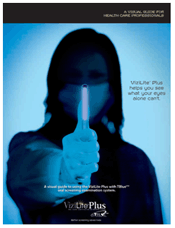Dental Problems | Kids Kare Korner | Regular Checkups
The importance of routine dental check-ups cannot be overemphasized. Have you ever wondered why the American Dental Association and virtually all dentists recommend that you get regular check ups? Simply, it is because regular dental visits are essential for the maintenance of healthy teeth and gums. Good oral hygiene is also a step toward a healthier life. Given that recent research suggests potential links between the bacteria that cause periodontal (gum) disease and systemic diseases, the prevention of periodontal disease is an important step in maintaining overall health.
Visit Often... Maintain a Healthy Smile
Most children and adults should see their dentist for a regular cleaning and check up every six months. Individuals at a greater risk for oral diseases should have dental check ups more than twice a year. Tobacco and alcohol use, diabetes, pregnancy, periodontal and gum disease, poor oral hygiene and certain medical conditions are some of the numerous factors that your dentist takes into consideration when deciding how often you need your dental cleaning and check up.
Going to your regular check ups will help to keep your gums and teeth healthy as well as detect any early problems such as gum disease, oral cancer and cavities. The best way to maintain good oral health is to visit your dentist on a regular basis.
Preventive Care... the Foundation of Good Dental Health
During your regular checkups, we examine the health of your mouth, measure the bone levels around your teeth, check for decay, screen for oral cancer, examine your restorations, evaluate your bite, and remove plaque and tartar from your teeth. In the case of children, and for some adults, a fluoride treatment is given and sealants may be applied.
Oral Cancer... Screening Saves Lives Oral cancer is one of the most common cancers today and has one of the lowest survival rates with 30,000 new cases being reported every year in the United States. Unfortunately, fewer than half of all people diagnosed with oral cancer are ever cured. Older adults over the age of 40 (especially men) are most susceptible to developing oral cancer, but people of all ages are at risk.
The single greatest risk factor is tobacco. While cases of oral cancers are seen in patients who do not use tobacco, these constitute a very small percentage of all oral cancers. All forms of tobacco have been implicated as causative agents including cigarettes, cigars, and pipe tobacco as well as chewing tobacco.
Heavy alcohol usage is an additional causative factor. Lip cancer, while included in statistics for oral cancer, is more similar to skin cancers. Certain kinds of foods and even overexposure to the sun have also been linked to oral cancer. Some experts believe certain oral cancer risk factors are also hereditary.
Warning Signs
In general, early signs of oral cancer usually occur in the form of lumps, patchy areas and lesions, or breaks, in the tissues of the mouth. Any persistent white patch must be regarded as being suspicious. Additionally, velvety red patches- particularly those with white speckles- should be areas of concern. Finally, any non-healing ulcer (erosion) merits evaluation. In many cases, these abnormalities are not painful in the early stages, making even self-diagnosis extremely difficult.
Oral cancer can occur anywhere in the mouth, but the tongue appears to be the most common location. Other oral structures could include the lips, gums and other soft palate tissues in the mouth.
 While self-examination is advised, some areas cannot be adequately viewed and, of course, there is no substitute for examination by a professional. The best method for detection is to be sure to have regular check-ups by your dentist. Should an area of concern appear in between these appointments, arrangements should be made for examination. If your dentist has any concern or question, he or she will refer you to an oral and maxillofacial surgeon for evaluation and possible biopsy. A biopsy is a quick office procedure which allows the surgeon to take a sample of the tissue in the area of concern for examination under a microscope.
While self-examination is advised, some areas cannot be adequately viewed and, of course, there is no substitute for examination by a professional. The best method for detection is to be sure to have regular check-ups by your dentist. Should an area of concern appear in between these appointments, arrangements should be made for examination. If your dentist has any concern or question, he or she will refer you to an oral and maxillofacial surgeon for evaluation and possible biopsy. A biopsy is a quick office procedure which allows the surgeon to take a sample of the tissue in the area of concern for examination under a microscope.
A part of our comprehensive examination, our dentist will conduct an oral cancer screening exam using ViziLite Plus which is an oral lesion identification and marking system. This technology is used to assist in the early detection of abnormal tissue in the mouth. While your insurance may or may not cover the examination, it is especially important for our patients to receive the most complete oral cancer screening available. Please be aware that your dental insurance benefits should not dictate the standard of care that you receive from a dental professional.
Prevention
As with any other cancer, treatment of oral cancer is best undertaken at the earliest stage. This maximizes chances of successful treatment. Smaller areas may be treated by radiation or surgery while larger areas will often necessitate combined therapy.
Prevention, of course, is the best approach and can best be achieved by avoiding risk factors - refraining from all tobacco products and consuming alcohol in moderation. A diet rich in fruits and vegetables is one of the best defenses against oral cancer. Maintaining good oral hygiene, and regular dental checkups, are highly recommended.